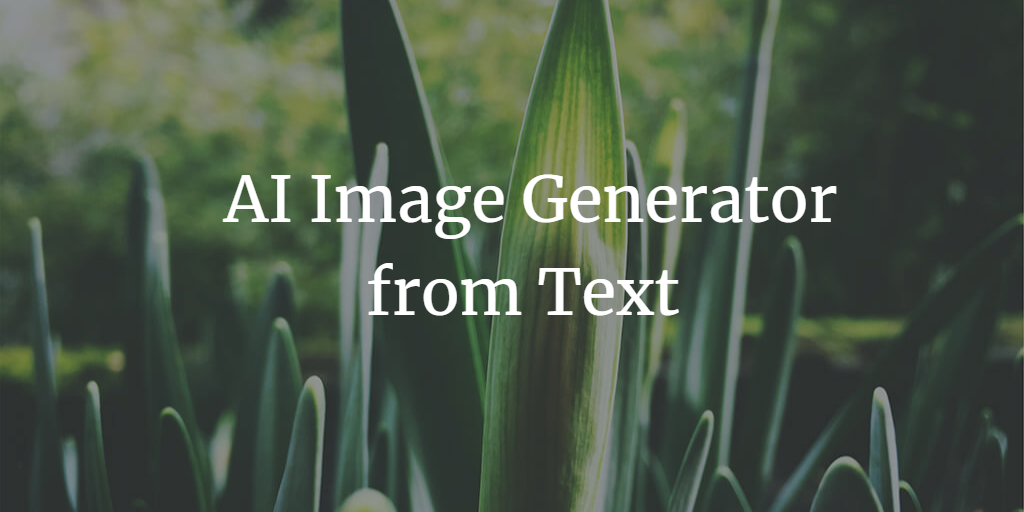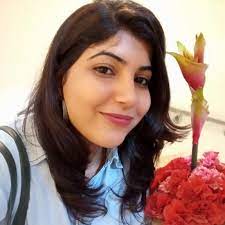Creativity at Scale: 7 AI Image Generator from Text Tools That Will Transform Your Words into Stunning Visuals

Table of Contents
Introduction
1. OpenAI's DALL-E
DeepArt
Artbreeder
Runway ML
Deep Dream Generator
PaintsChainer
BigGAN
The Power of AI in Image Generation
The Future of AI in Image Generation
Applications of AI Image Generators
Advertising and Marketing
Digital Art
Entertainment and Media
Fashion
Education and Training
Personalized Content Creation
Social Media
Challenges and Ethical Considerations
Conclusion
Introduction
AI image generators from text, also known as text-to-image synthesizers, use a combination of natural language processing (NLP) and computer vision to generate images from textual descriptions. These tools have a broad range of applications, from creating artwork and graphic designs to producing advertising material and visual content for social media.
1. OpenAI's DALL-E
DALL-E is a unique variant of the GPT-3 model developed by OpenAI, which generates images from textual descriptions. It utilizes a dataset of text-image pairs to understand the correlation between the two and generate images that match the given textual description.
With DALL-E, you can generate a wide array of images, from everyday objects to entirely imaginative creations. The possibilities are limitless with this AI image generator, and it's incredible to see the kind of unique, quirky, and sometimes surreal images that can come out of a simple textual description.
2. DeepArt
DeepArt stands at the intersection of AI and art, embodying creativity at scale. It utilizes a form of AI known as neural style transfer to create unique artistic images. While DeepArt isn't a traditional text-to-image generator, it generates visuals based on the style of another image, which could be described textually.
Users can submit an image, and then another image to act as the 'style' inspiration. The AI then processes these inputs and generates an output image that combines the content of the first image with the style of the second. DeepArt allows users to create stunning, artistic images with ease.
3. Artbreeder
Artbreeder brings the power of Generative Adversarial Networks (GANs) to image creation. This tool blends multiple images together to create unique offspring images, guided by textual inputs. Although not purely a text-to-image generator, the process can be influenced by text descriptions.
Artbreeder is like a massive collaborating community where images are constantly edited and remixed by users, producing an ever-evolving collection of incredible visuals. It offers various genres, from portraits and landscapes to anime characters, showcasing creativity at scale.
4. Runway ML
Runway ML is an easy-to-use platform that offers a suite of machine learning tools for creators. One of its standout features is the ability to generate images from text using BigGAN. The platform also allows users to train their custom models, offering a fantastic resource for creatives, artists, and designers alike.
Runway ML is designed to democratize machine learning, providing accessible, powerful, and flexible tools to generate unique AI-driven content. It helps transform creative ideas into stunning visuals.
5. Deep Dream Generator
Deep Dream Generator is an AI image generator tool that draws inspiration from Google's Deep Dream algorithm. This tool doesn't precisely generate images from text, but it does produce stunning visuals based on images with the influence of various pre-set styles. Users can also provide textual descriptions to influence the style of the output.
The platform is an excellent tool for artists and creators, allowing them to experiment with different styles and create mesmerizing visuals. From dreamy landscapes to bizarre and surreal art, the results can be truly astonishing.
6. PaintsChainer
PaintsChainer is a unique AI-powered tool that colorizes black and white sketches based on text descriptions. While it doesn’t generate an entire image from text, it uses textual information to understand the color scheme of the sketch.
Simply upload a black and white sketch, input a text description of the color scheme you want, and PaintsChainer does the rest. This tool has broad applications, particularly in the realms of animation and graphic design.
7. BigGAN
BigGAN is a large-scale generative model developed by Google's DeepMind. It creates high-quality images from random noise, guided by class labels. However, there are tools like Runway ML that provide a more user-friendly interface to generate images from text using BigGAN.
One of the remarkable aspects of BigGAN is the quality of images it produces. The generated images are highly detailed and realistic, pushing the boundaries of what GANs can achieve.
The Power of AI in Image Generation
These seven AI image generators illustrate the vast potential of AI in the realm of visual content creation. The idea of transforming a simple text description into a stunning visual opens up numerous opportunities for artists, designers, content creators, and advertisers.
Whether you're an artist looking to explore new creative avenues, a content creator seeking unique visuals, or a business needing custom graphics for your brand, these AI tools offer innovative ways to bring your ideas to life.
The Future of AI in Image Generation
As we look to the future, we can expect the capabilities of AI image generators to only increase. As AI technology evolves and machine learning models become more sophisticated, the generated images will become more detailed, nuanced, and aligned with the original text descriptions.
There is an enormous scope for personalization and customization, which could further revolutionize industries such as advertising, fashion, and entertainment. The power to create tailor-made visuals from textual descriptions could streamline the content creation process and offer an unprecedented level of creative control.
Applications of AI Image Generators
The potential of AI-powered image generators is beginning to unfold across various sectors, lending a unique value proposition. Let’s dive deeper into some prominent applications where these tools are becoming game-changers:
Advertising and Marketing
Brands continuously strive for eye-catching visual content to stand out in the ever-competitive market. AI image generators can create highly personalized and unique visuals, enhancing the effectiveness of marketing campaigns. Advertisers can generate images that align perfectly with their campaign message, thereby significantly improving their content relevance and user engagement.
Digital Art
Artists can experiment with AI image generators to create novel artwork, pushing the boundaries of their creativity. These tools can breathe life into their ideas, produce intricate details, and present an entirely new perspective of their art. Artists can also use AI to collaborate, with the AI tool adding its unique touch to the art piece.
Entertainment and Media
From video games to movies, AI image generators can enhance visual experiences by generating detailed and realistic images. Game designers can use these tools to create immersive environments, character designs, and more. Film producers can employ AI for generating concept art, storyboarding, and even special effects.
Fashion
AI image generators can significantly influence fashion design by creating unique patterns, textures, and styles. Designers can input text descriptions of the design they have in mind, and the AI can generate a visual representation. This application can lead to highly personalized clothing and accessories.
Education and Training
AI image generators can also play a significant role in education and training. Teachers can generate images corresponding to specific textual descriptions to aid visual learning. In training scenarios, these tools can generate images that represent different scenarios, helping trainees visualize and understand situations better.
Personalized Content Creation
Content creators, bloggers, and influencers can make use of AI image generators to create highly personalized and unique visuals for their content. Instead of spending time searching for the perfect image to match their content, they can generate one that fits their exact needs, enhancing content relevance and engagement.
Social Media
The use of AI image generators isn't restricted to professionals alone. Social media users can use these tools to generate unique images for their posts, making their content stand out and attract more engagement.
Challenges and Ethical Considerations
While the potential applications of AI image generators are exciting, it's important to consider the ethical implications and challenges. These tools could potentially be used to create misleading images or deepfakes, which can spread misinformation. Hence, responsible use of these technologies is crucial.
Moreover, issues related to copyright and ownership can arise, especially when these tools generate images based on existing artworks or copyrighted images. Therefore, it's important to use these tools responsibly and acknowledge the original creators where necessary.
Conclusion
AI image generation tools embody the essence of creativity at scale, transforming mere words into stunning visuals. By synthesizing images from text, AI is not only broadening the horizons of digital art and content creation but also making these domains more accessible.
So, whether you're a seasoned artist, a budding creator, or someone just starting on your creative journey, explore these AI tools and see how they can transform your words into a visual reality.
The rise of AI image generators signifies a transformative phase in the realm of digital content creation. With these tools, the gap between imagination and visualization is rapidly shrinking. However, as we leverage these advanced technologies, we must also address the ethical implications and strive to use them responsibly.
Embracing these cutting-edge tools can revolutionize how we perceive and interact with visual content. As AI continues to evolve, we can look forward to even more powerful image generators, taking creativity at scale to new heights.


